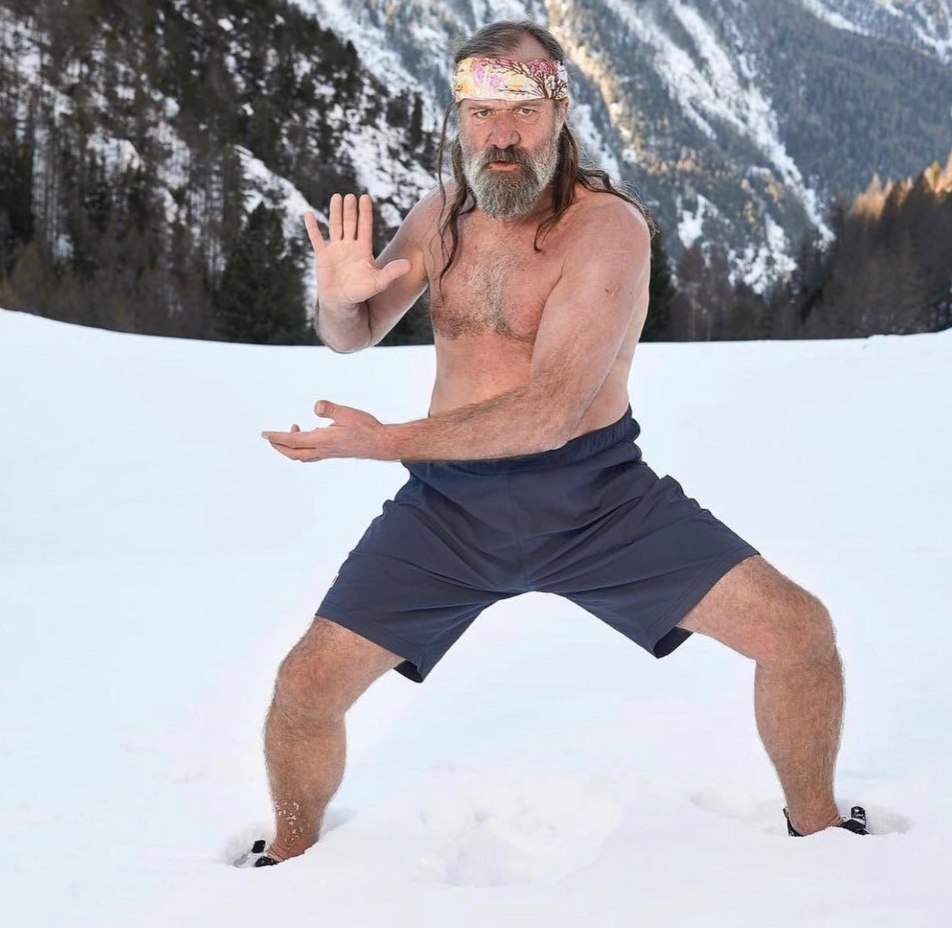In my experience, a handful of widely accepted practices in modern times, such as Transcendental Meditation and the more recent phenomenon known as the Wim Hof Method, do not deliver us to the promised land. I need to express this upfront. Even though these techniques are widely practiced and their founders are revered as gurus, my experience shows me clearly that they were marketing geniuses who knew how to hook seekers and convince them their snake oil was medicine. I will not dwell more than necessary on these techniques, but I need to mention them because many readers may expect to see them referenced.
To summarize briefly, Transcendental Meditation emphasizes chanting a secret word given by a coach. Students are told not to think about rhythmic breathing and not to focus on observing the mind and its activity. To me, this is loaded with inconsistency and shows neglect for basic facts of physiology.
Wim Hof, for his part, has a wonderful personality, and he has helped many people discover breathing as a target activity. He also popularized submerging in ice to build mindfulness. There are physical benefits to cold baths, and one can even train themselves to love the feeling, but this is far from being necessary. Daily effort in ordinary relaxed circumstances is far more important. I would caution against meditation hacks that display the telltale signs of quackery, such as an eccentric, charismatic leader with a messiah-like presence.
We are going off track here, but if this subject compels you, skip ahead to the later chapters where I give more detail on these methods. You may also listen to podcasts or watch documentaries that cover the darker sides of Transcendental Meditation and the Wim Hof movement.
In truth, there are countless ways to approach meditation. The first is to avoid gurus who make themselves the focus of your journey. There is no emphasis in my work on honoring or worshipping me. I am no one. I do not want you to think of me in your meditation. You do not need to send me money. You do not have to be a devoted follower. Other than this offering and some articles I post, you are on your own with me. I cannot save you. I am not mystical or magical or any nonsense like that. It is on you if you choose to frame me in that way.
The most important breathing lesson is simple: stop holding your breath in life, and stop breathing shallow. This is not so much a technique as it is a “do not do that” guideline. I cannot be famous for teaching people to stop something, because there is nothing exciting about it. The other part is breathing deeply, getting more air in and more air out. Steady breathing, the kind that restores the heart rate to its resting state, signals the brain that we are safe, provided the nervous system is functioning well.
Of course, emotional activity can interfere with this benefit. Even with a few good breaths, anxious thoughts can slip back in. So it is not as simple as telling someone to “take a deep breath and you are a master.” There are levels of training in relaxation that go further, including therapy, writing, diet, exercise, and other supporting practices. Breath work is the starting point. But to create lasting relaxation, you must engage the other disciplines as well.
Many cold plunge enthusiasts engage in intense breathing exercises beforehand, often involving rapid inhalations and exhalations followed by breath-holding. This is a form of controlled hyperventilation (not hypoventilation), where carbon dioxide (CO₂) levels drop and oxygen (O₂) saturation remains relatively high. This shift in blood gases can trigger sensations like lightheadedness, tingling, or euphoria.
These techniques, popularized by methods like the Wim Hof Method*, are thought to increase alertness, expand stress tolerance, and potentially stimulate aspects of the autonomic nervous system. However, data on long-term benefits, especially in relation to vagus nerve "toning," remains limited and inconclusive.
What is clear: if practiced irresponsibly, particularly in unsafe environments (e.g., underwater or while driving), these techniques carry real risks, including fainting (syncope) and cardiovascular stress, especially in individuals with underlying heart or blood pressure conditions.
So is using adrenaline to reach relaxation sustainable, or just another mind trick?
That’s the paradox. We use sympathetic arousal (adrenaline) to kickstart parasympathetic recovery (calm). It works. But it’s also not the same thing as cultivating equanimity through daily stillness and presence. Relying too much on “stress-to-calm” loops could build a dependency on novelty and intensity, stimulus chasing masked as spiritual practice.
Still, the psychological victory of completing a cold plunge shouldn’t be dismissed. The experience builds confidence, mental resilience, and emotional reset, valuable traits in a chaotic world. And for some people, that surge of challenge is exactly what breaks through mental fog.
But if you’re asking whether cold plunges are necessary for transformation, the answer is: not at all, though for some, they serve as a powerful doorway into deeper practices.
The challenge, the dare, the adrenaline rush, it’s exciting. For many, it becomes a pivotal life experience. Old-school, "boring" meditation, where we sit still and breathe, might not appeal at first. But something popularized, physical, and socially validated? That’s often the hook.
It’s nothing more than an approach to waking up, no different than skydiving, trapezing, scuba diving, or running marathons. It’s a technique, not a requirement.
Cold exposure works especially well for high-intensity personalities, those who crave action, sensation, and a hit of dopamine to get the journey toward mindfulness and self-mastery started. It gives them something to conquer, mind over matter in the real world. Something real. And from there, the inner work begins.
It works. But it’s not the only way.
